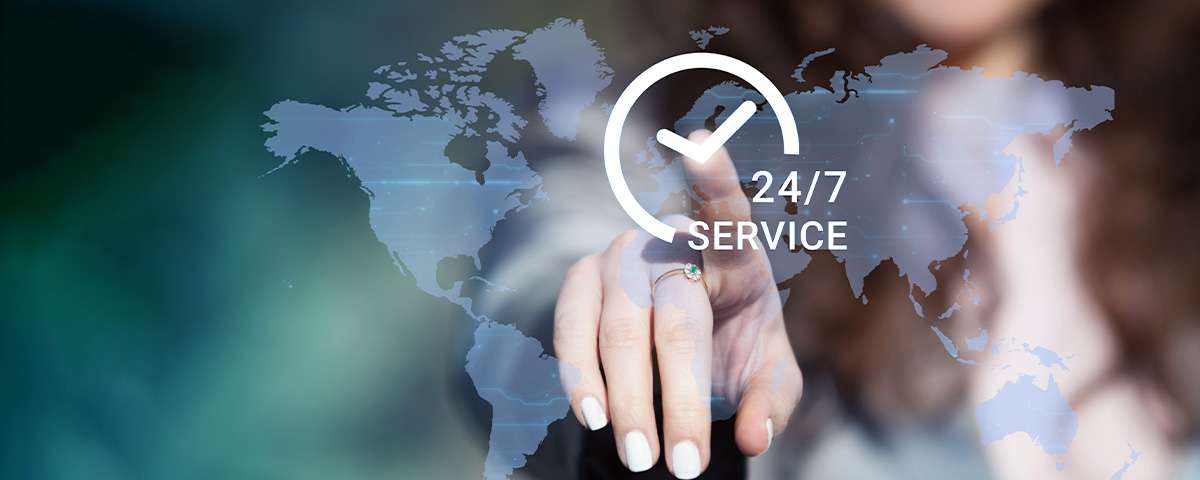Not so long ago, the concept of self-service was a tough sell for businesses. From scanning one’s own grocery items to using a digital kiosk to order a meal at a fast-food store, the introduction of self-service technology was often greeted with cynicism by a lot of consumers. “Oh, I get it,” they thought, “they want to save a few dollars by getting me to serve.”
Well, what a difference a few years makes. Today a growing number of people love the convenience and speed that comes with self-service and nowhere is that more evident than in the contact centre environment. The rise of chatbots, interactive voice response (IVR) systems and AI-powered speech recognition technology is allowing customers to resolve problems, find answers and complete tasks without the assistance of human agents.
A Microsoft report found 74% of consumers have used a self-service support portal1 and, judging by the results of another survey, many people are doing so with a smile on their faces. It revealed that almost 70% of customers prefer self-service over talking to a customer service representative as it is more convenient, faster and lets them feel in control of completing a task2. This is supported by a Harvard Business Review finding that, across all industries, 81% of customers try to resolve issues on their own before contacting a live professional3.
It goes without saying that the growing rate of self-service usage is a win for contact centres. Along with being less expensive than the use of human agents, significant call reductions allow customer service staff to focus their time and energy on more complex enquiries.
Then there are the benefits for consumers, with the following five ways self-service is improving customer experience.
- Reduced wait times: forcing customers to wait on hold for lengthy periods increases abandoned call rates, diminishes customer experience and prompts negativity towards a brand. With 60% of customers saying one minute is already too long to be on hold4, self-service technology can help mitigate this risk by providing them with access to FAQs, virtual agents, web forms and other digital services.
- 24/7 customer support: the modern consumer does not care what day it is, let alone the hour of the night. If they want an answer to a query, they want it now. While the cost of labour once meant around-the-clock support was a pipedream for many businesses, self-service technology is allowing customers to find the information they need or to access AI-powered chatbots that can provide it for them. The associated cost savings also allows organisations to invest in extra human agents when and where they are most needed.
- Connecting with youth: while some baby boomers reminisce about the good old days of landline phones, young consumers have never known a world without a smartphone in their hand. Statistics show 55% of Gen Z consumers are on their phones for more than five hours each day5 and modern customer service requires businesses to meet them on that platform. Self-service options via mobile devices allow for seamless access to contact centres and, accordingly, a positive lift in how users view a brand.
- Call routing: cloud-based inbound contact centre software has revolutionised the sector by automatically routing calls based on a caller’s natural response to one question – “How may I help you today?”. While a customer would have previously been required to use a limited touch-pad menu and cross their fingers that they would be transferred to the right destination, applications such as Oration by Convai mean they can simply state their reason for phoning and be routed accordingly.
- Speech recognition: Interactive Voice Response (IVR) has helped take self-service to the next level and, in doing so, become a key component of omnichannel CX success. This is especially so for IVR self-service systems that have the capacity to recognise caller intent using AI-powered speech recognition technology as it allows callers to complete tasks such as making bookings, finding store locations and checking account balances without waiting in queue for an agent. All they need is the power of their voice.
The brands that shine when it comes to customer experience are those that make life as easy as possible for their customers. By reducing agent handled call volumes, lowering response times and providing seamless access to information, self-service technology is doing just that at a time when businesses have never been under more pressure to deliver.
Did you know more than 80% of consumers are put on hold every time they contact a business?6 Learn how hold times affect customer experience and the ways to optimise your contact centre operations to minimise caller frustrations.
Reference:
1 EN-CNTNT-Report-DynService-2017-global-state-customer-service-en-au.pdf (microsoft.com)
2 61 Eye Opening Customer Service Statistics for 2022 (keeping.com)
3 Kick-Ass Customer Service (hbr.org)
4 How Long Will You Wait On Hold for Customer Service? (prweb.com)
5 How Obsessed is Gen Z with Mobile Technology? - The Center For Generational Kinetics (genhq.com)
6 Hold Up - More than 80 Percent of People are Put on Hold Every Time They Contact a Business (prnewswire.com)





